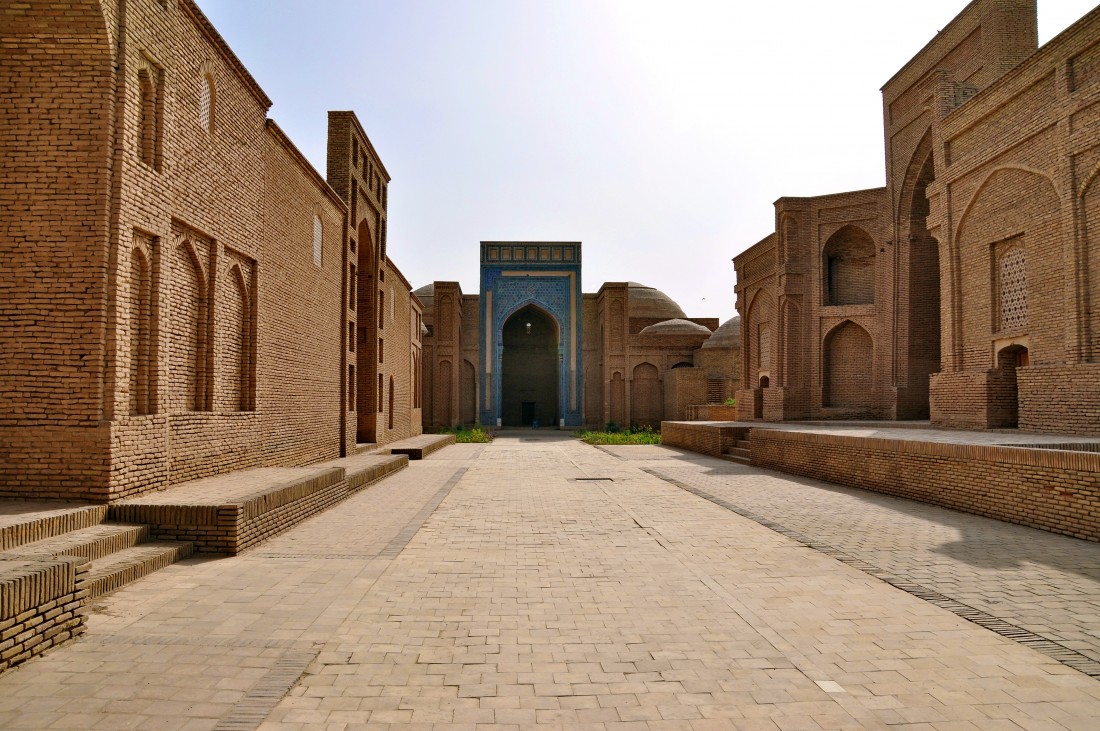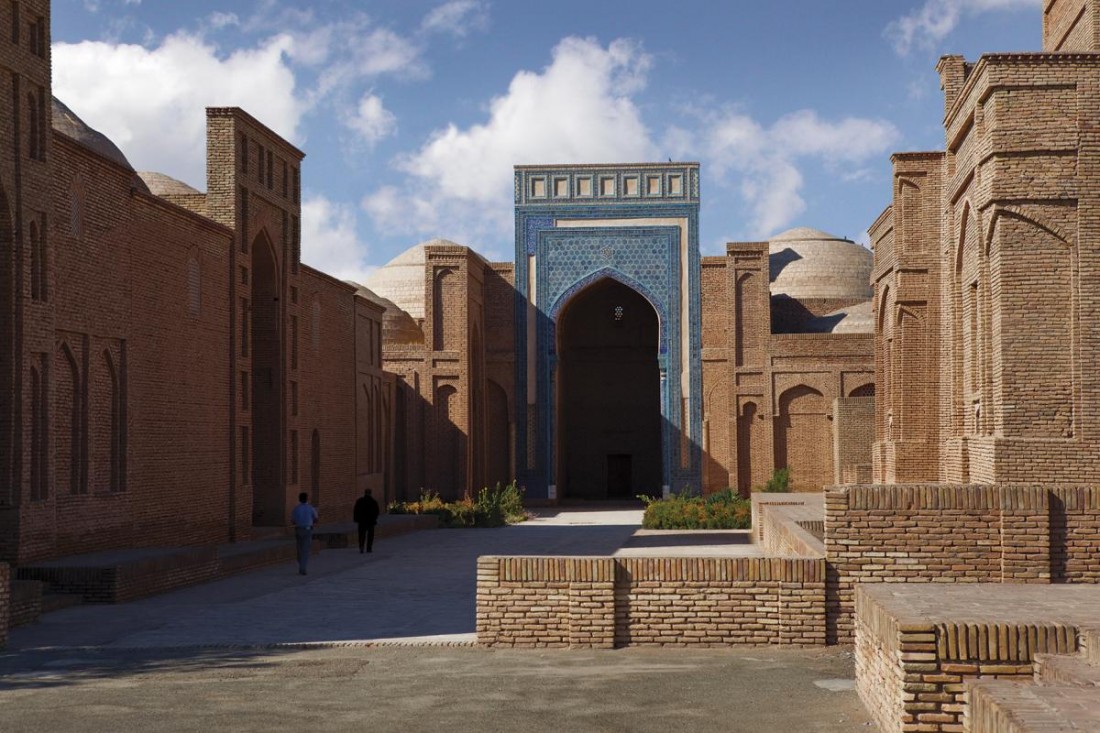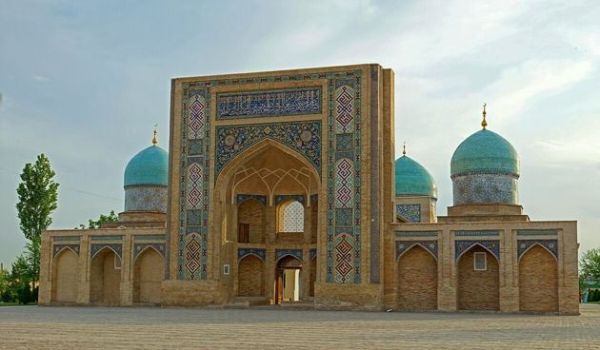Sultan Saodat Memorial Complex
There are architectural monuments in Termez that show the spirit of generational continuity, the memory of the glorious historical past of the Surkhandarya land. The Sultan Saodat memorial complex belongs to such places, fanned by the memory of ancestors. It is located very close, three kilometers from the settlement of Old Termez.
The Sultan Saodat ensemble covers an area of about 4 hectares and includes 143 structures. The earliest tomb, on the northern edge of the complex, dates back to the 11th century. The founder of the Termez Sayyid family, Hassan al Emir, rests in it. The portal of the square building, topped with a huge dome, rises fifteen meters and is the tallest part of the ensemble. Even in ancient times, the mausoleum was decorated with glazed tiles, which in terms of brightness of color and fineness of work are quite comparable to the Samarkand samples. Its dome is supported by arches and sails lined with burnt bricks in a herringbone pattern. Large and small niches with corner columns alternate in the interior and on the northern facade of the building, a technique that has become typical of other similar architectural monuments of this era.
Another ancient building of the complex, the southern mausoleum, was built a little later, at the end of the XI – beginning of the XII century. The well-preserved Ivan mosque dates back to the same time. Initially, this place was chosen as a necropolis for the emirs, and then began to be built up with tombs of members of the royal house according to their taste and capabilities. The latest structure, the entrance portal, which closes the eastern facade, was built at the turn of the 17th and 18th centuries.
All mausoleums are oriented to the west and do not have any inscriptions by which it would be possible to determine who is buried in them. However, according to legend, the ashes of Emir Hussein, an associate of the famous medieval statesman and commander Amir Temur, and then his rival in the struggle for power, are buried in one of the modest tombs located on the outskirts of the complex. For a long time, there was a pole with a horse's tail tied to his grave, and the burial itself was revered as a holy place. There are four graves inside the mausoleum. In addition to Emir Hussein himself, one of his wives and two sons are buried here.
This unique museum of Oriental architecture attracts pilgrims and tourists from all over the world. Interestingly, the first European to see and describe the Sultan Saodat complex was the famous French traveler, geographer and ethnographer Gabriel Bonvalot, who visited it in 1880. In Soviet times, the entire area of Old Termez adjacent to the border was closed to tourists. It was only after Uzbekistan gained independence that these unique monuments of Surkhandarya became available to travelers who had traveled considerable distances.












